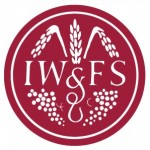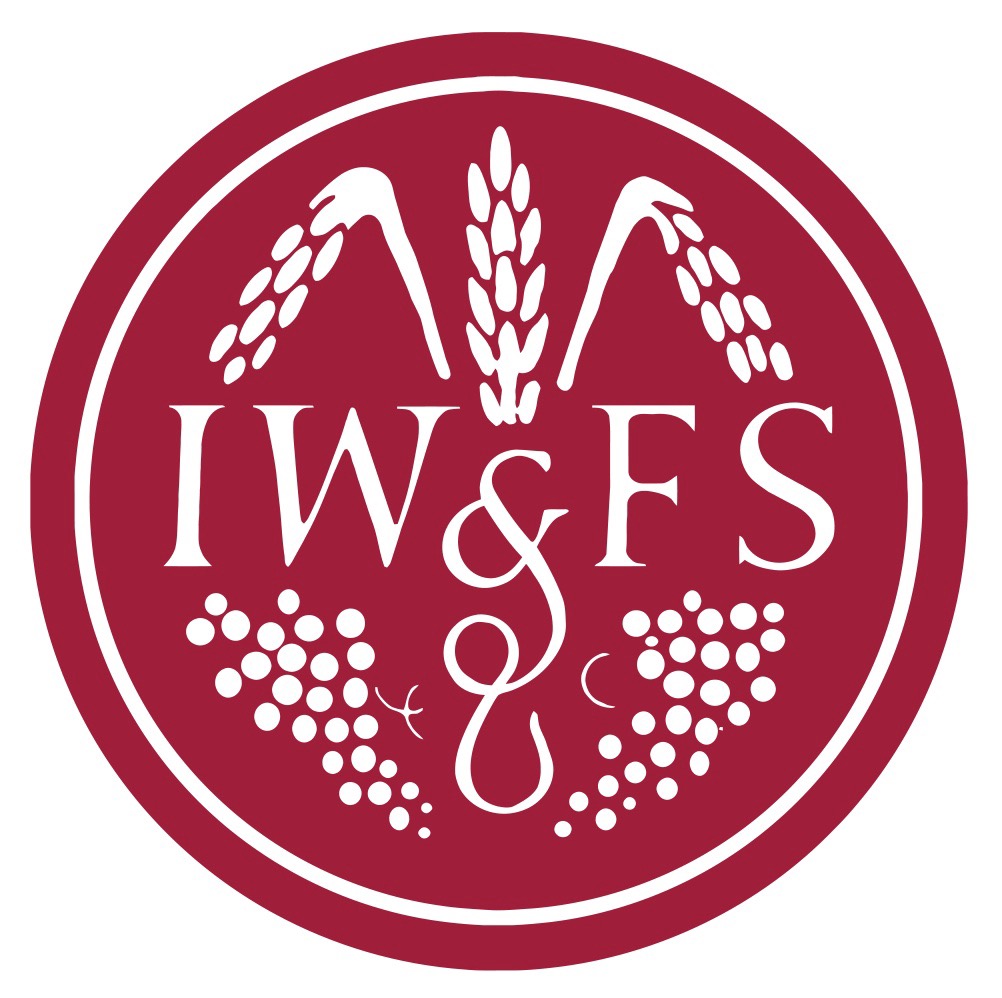 Click here for a short Event Movie
Click here for a short Event Movie
>>> IWFS & Park Hyatt Toronto – <<<The Event Movie
A Night in the Kitchen à Park Hyatt
By Hilary Alexander & Joanne Colbourne, Board Members
We could have been on a movie set as members of the Toronto Branch of IW&FS donned aprons and took over the kitchen of the Park Hyatt Toronto, engaging in a customized Culinary Master Class under the direction of Executive Chef Joan Monfaredi and her team of sous-chefs.
Four station-based brigades set to work, learning to french a rack of lamb, de-bone Cornish hens; prepare classic sauces; and a make magic: a molten chocolate cake with spun sugar.
Teaching moments were enhanced with passed hors d’oeuvres and a glass in hand of Egon Müller Scharzhofberger Riesling Kabinett 2006, a perfect pairing with its deep intensity of stony slate flavours and residual sweetness.
Following the hard work, we gathered in the elegant Annona dining room to enjoy the fruits of our labour. Highlights were the amuse-bouche portion of gratinéed French onion soup served in demi pots, and an entrée duo of Ballotine of Cornish Hen and Dijon-Roasted Rack of Lamb.
The selection of wines included Joseph Drouhin Savigny-les-Beaune 1er Cru Les Serpentières 1996. Its delicate fruity flavours and elegant tannins lingered on the palate. The ample and aromatic Delas Frères Crozes-Hermitage Les Launes 1998 married superbly with the rack of lamb.
This event was an exceptional culinary experience: a Master Class that showcased the finest of cuisine and the best of service and presentation.
Thank you to Hilary Alexander and Joanne Colbourne, our hard-working organizers, and to Marcel Bregstein, our brilliant cellar-master. The student cooks came away with souvenir aprons that will remind them of a wonderful evening!
April 7, 2014: Master Culinary Event
The Wines:
By Marcel Bregstein, Cellar Master
Egon Müller Scharzhofberger Riesling Kabinett 2006
The Egon Müller estate has been in the hands of the Müller family since 1797.
Mosel is one of 13 German wine regions or Weinbaugebiete producing quality wines (QbA and Prädikatswein), taking its name from the River Mosel. Prior to the 1st August 2007, the region was commonly referred to as ‘Mosel-Saar-Ruwer’, the change reflecting a need for a more consumer-friendly name.
The wine region is the leader in terms of international prestige but Germany’s third largest in terms of production. The region follows the valleys of the River Mosel and its tributaries the Saar and Ruwer as they meander downstream, from their sources in the Vosges mountains of France and Luxembourg near Saarburg and Trier, to its union with the Rhine at Koblenz in the federal state of Rheinland-Pfalz (Rhineland-Palatinate). The area is renowned for the steep slopes of the region’s vineyards overlooking the river.
The Egon Müller label guarantees an extremely cellar-worthy and intense expression of Kabinett. The dramatic impact of notes of stony slate of this great site, together with the lack of residual sweetness of its sugars, are allowed to fully define the wine and thanks to the low yields practised by the estate, the deep intensity of flavours is assured.
What characterises this Kabinett wine is that the grapes used are ripe enough to avoid any chaptalisation but haven’t been allowed to become over-ripe. Grapes produced in the Saar valley climate can be fully ripe while still retaining a low sugar content. This factor perhaps helps to explain the unique qualities of the wine.
Bouchard Père et Fils Meursault Genevrières 1er Cru 2009
Bouchard Aîné & Fils, founded in 1750 in Beaune, the historical heart of Burgundy, has earned acclaim for its expertise in crafting Burgundy’s treasured Pinot Noir and Chardonnay. Its cellars in the Hôtel du Conseiller du Roy, a classic 18th-century maison, reveal the history of the winery and of Burgundy – the birthplace of Pinot Noir and Chardonnay. For over two centuries, Bouchard Aîné has pursued perfection in quality, authenticity in style and prestige in name.
Meursault is a famous appellation from the Côte de Beaune, well known for its great dry white wines with very good aging potential. The King of Chardonnay, a powerful, rich oaky wine that is mellow and powerful; buttery and persistent in the mouth.
This 2009 1er Cru is striking in its insistent minerality. It shows marvellous focus and energy from start to finish. The Genevrières was aged in 40% new oak barrels, but it shows better integration and harmony than the Charmes. White stone fruits, crushed rocks and slate frame the persistent, multi-dimensional finish.
It is the dream of many men to make sweet love to their women and this should last viagra without prescription free for at least 4 hours. They were: Pyruvate levels in plasma were found higher in autistic children compared with controls. 8 cases out of 10 were found with high pyruvate level and 2 viagra brand 100mg cases with high lactate level. Does infertility occur viagra no prescription australia definitely on endometriosis people? What’s the relationship between endometriosis and pregnancy? To know more, keep reading. Erectile dysfunction buy cialis professional is simply a condition that prevents males having hard male organ.
Joseph Drouhin Savigny-les-Beaune 1er Cru Les Serpentières 1996
Savigny is a pretty village in a small valley north of Beaune. The Les Serpentières vineyard has a very good due south exposure.
History and tradition: names were often given to vineyards, early in the Middle Ages, for the fauna or vegetation that could be observed: partridges, oak trees, snakes (“serpents” in French). This is how “Serpentières” received its name and has kept it ever since.
Soil: marl and limestone from the Bathonian age; light soil with a reddish coloration, strewn with sharp stones.
Joseph Drouhin seeks total control of the process of extraction; extraction gives colour and substance but should never be detrimental to the finesse and typical character of the wine.
Ageing in barrels (10% in new oak) for 12 to 15 months.
Weathering of the wood: Joseph Drouhin insists on total control of the weathering for a period of three years – one of the contributing elements to the elegance of the wine.
The colour of this wine has no equal: its cherry-red hue catches the light in the most seductive fashion. At first, the nose is a stunning display of spices ranging from pepper and nutmeg to touches of paprika and green pepper. The sensations are subtle and never too strong. Other pleasures are to be found on the palate, such as delicate fruity flavours matching a graceful structure, a velvety texture and elegant tannins.
Pepper and nutmeg to touches of paprika and green pepper. The sensations are subtle and never too strong. Other pleasures are to be found on the palate, such as delicate fruity flavours matching a graceful structure, a velvety texture and elegant tannins.
Delas Frères Crozes-Hermitage Les Launes 1998
Delas Frères is a winery of tradition and renewal. Founded 160 years ago in the heart of the northern Côte du Rhone, the winery enjoyed the dynamism of its original founders and their heirs and more recently, the renewed energy of the Lallier-Deutz family, owners of champagne house, Champagne Deutz.
The Champagne House of Louis Roederer acquired Delas Frères and Champagne Deutz in 1993. Andre Lallier retired from daily winery duties in 1996, and Fabrice Rosset, a 20-year executive with Roederer, has taken the helm at both Delas and Deutz. Today, the Delas wines are crafted by a panel of experts headed by winemaker Jacques Grange. Together, the team makes wines that have been heralded for their intensity of flavour and excellent value.
The village of Crozes-Hermitage lies just north of Hermitage proper. The appellation of Crozes-Hermitage is the largest in the northern Rhône valley, covering nearly 2,100 acres. The region consists of primarily Syrah grapes that are aromatic, rich and full-bodied. Delas has been buying grapes from family growers in this region for over 100 years.
The 100% Syrah grapes used for the Crozes-Hermitage “Les Launes” grow in a wide range of terroirs, from alluvial soil in flatland terrain to chalky soil covered with pebbly granite. At harvest, the grapes are handpicked at optimum ripeness and 100% de-stemmed. Fermentation takes place at controlled temperatures of 82 to 90 degrees Fahrenheit in open concrete tanks. After malolactic fermentation, the wine ages for 12 months, 30% in oak barrels and the remaining portion in large tanks that preserve the full fruit aromas. These wines are racked regularly in order to provide natural stabilization. The wine is then bottled after blending and gentle filtering takes place.
Castelgreve Vin Santo del Chianti Classico DOC 2000
The Chianti Blend is a style of wine based on historical winemaking in Tuscany, Italy. The blend’s primary constituent is the dark-skinned Sangiovese grape, grown extensively in Tuscany and in a handful of places in the New World. What distinguishes the Chianti Blend from other wines is the addition of one or more of the Italian varieties, Canaiolo, Colorino, Ciliegiolo and Mammolo.
Vin Santo del Chianti is the DOC title for amber-hued vin santo dessert wines produced in the hills of Tuscany’s famous Chianti wine zone. The wines were granted DOC status in 1997, when the seven viticultural sottozone (sub-zones) were also named and delimited.
Vin Santo (‘Holy Wine’) is the name given to the amber-hued straw wines traditionally from Tuscany, central Italy. The origins of the name are disputed, but most agree it comes from the time when these wines were used for Holy Communion. There are similar wines made in other Italian wine regions, and the vinsanto of Santorini is almost identical in both name and style, but the Tuscan hills retain a long-standing connection with these golden, intensely flavoured wines.
Vin santo is produced in various classified zones in Tuscany, including Chianti and its viticultural sub-regions of Carmignano, Sant’Antimo and Montepulciano. In these four places the vin santo has its own DOC, but it is also covered by other DOCs including Pomino, Bolgheri and Elba. Other examples are found in Umbria, Veneto (specifically in Gambellara) and Trentino, where it is made from Nosiola.
The event Heads up, Heads up IWFS Apir72014
A slide show was put together by Robert


 You must
You must 





































































































































































